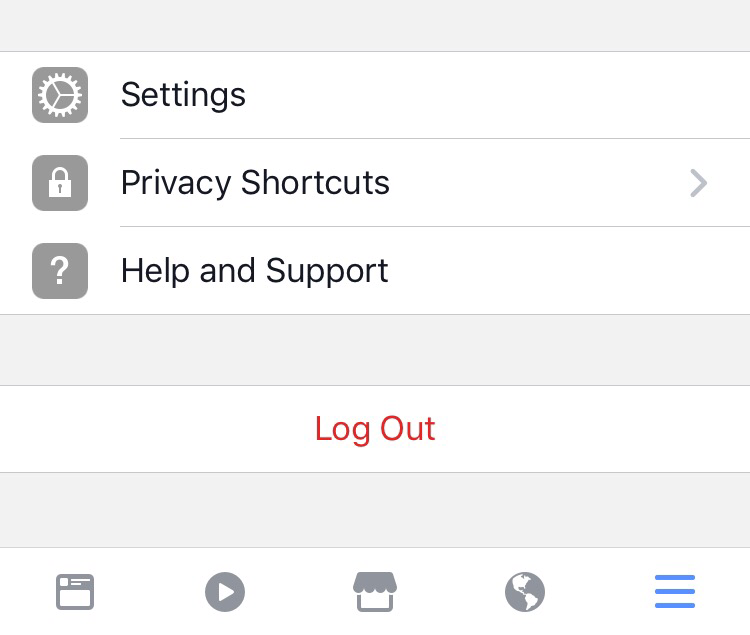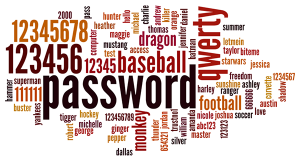Long gone are the days of lax security and terrible privacy settings on Facebook. If you know where to look and what you’re looking for, you can easily micro-manage your online privacy and security settings for the social media behemoth. The key, however, is knowing where to look and what you’re looking for.
The following 5 settings are important to your privacy and can be checked easily, right now. This guide uses screen shots from an iPhone, but the directions only mildly vary on Android or the Web.
Before we get started, you might need to know how to access settings.
- Look for then tap on the hamburger button, likely on the lower right-hand corner of your screen.
- Scroll way down to the bottom of that screen, until you see ‘Settings’.
- Tap on Settings, then choose either ‘Account Settings’, ‘Payments Settings’, ‘News Feed Preferences’, or ‘Activity Log’. This guide will focus on ‘Account Settings’.
- Recognized Devices
Settings » Account Settings » Security » Recognized Devices
 This handy little setting will show you a list of devices that are authorized to access your account without additional verification. Examples would include your smartphone, tablet, and possibly your computer. If you see any devices at all on the list that you aren’t familiar with, don’t own or can’t remember verifying, click the ‘X’. This will remove that device from the approved list and require that device to be re-verified.
This handy little setting will show you a list of devices that are authorized to access your account without additional verification. Examples would include your smartphone, tablet, and possibly your computer. If you see any devices at all on the list that you aren’t familiar with, don’t own or can’t remember verifying, click the ‘X’. This will remove that device from the approved list and require that device to be re-verified.
- Manage Active Sessions
Settings » Account Settings » Security » Where You’re Logged In
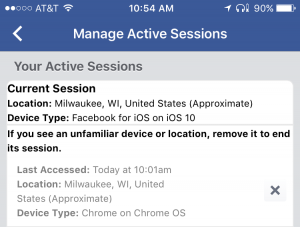 This list is likely going to be a bit longer, and will list anywhere that you’ve logged in to Facebook and never logged back out. Clicking the X will automatically log that device out of Facebook next time it tries to access it, so go through the list and make sure nothing looks fishy. When looking at it, try to figure out which device might be your current cell phone, computer, etc, and try to remove any old, dead, or donated devices. Worst case scenario, you just have to log back in next time you use it.
This list is likely going to be a bit longer, and will list anywhere that you’ve logged in to Facebook and never logged back out. Clicking the X will automatically log that device out of Facebook next time it tries to access it, so go through the list and make sure nothing looks fishy. When looking at it, try to figure out which device might be your current cell phone, computer, etc, and try to remove any old, dead, or donated devices. Worst case scenario, you just have to log back in next time you use it.
- Legacy Contact
Settings » Account Settings » Security » Legacy Contact
Look, I know this one is a bit morbid, but it’s worth setting up. You can find it just below the two settings I’ve already gone through above, and Facebook gives you the option of either passing control of your account on to a trusted family member or friend, or optionally it can be permanently deleted.
- Free Up Phone Space
Settings » Account Settings » Browser
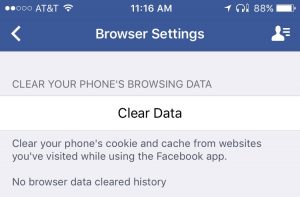 Mobile storage is at a premium, so this handy little trick can definitely help. Any time you click a link in Facebook on your phone, it saves a few files (called a “cache”) to help that page load faster next time. Navigate to the Browser Settings and click the big ‘Clear Data’ button to remove all of these temporary files and buy back a bit more storage for your phone.
Mobile storage is at a premium, so this handy little trick can definitely help. Any time you click a link in Facebook on your phone, it saves a few files (called a “cache”) to help that page load faster next time. Navigate to the Browser Settings and click the big ‘Clear Data’ button to remove all of these temporary files and buy back a bit more storage for your phone.
- Disable Video Autoplay
Settings » Account Settings » Videos and Photos
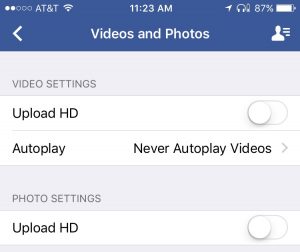 Autoplaying videos as you scroll or load a page should be a capitol offense on the Internet. It needlessly uses data that most people don’t have to spare, can slow down older or less powerful mobile devices, and, frankly, is annoying. Alas, Facebook still enables it by default. Thankfully, they allow you to turn it off completely, only auto-play when you’re connected to wi-fi (to save on mobile data), or leave it on all the time (the default).
Autoplaying videos as you scroll or load a page should be a capitol offense on the Internet. It needlessly uses data that most people don’t have to spare, can slow down older or less powerful mobile devices, and, frankly, is annoying. Alas, Facebook still enables it by default. Thankfully, they allow you to turn it off completely, only auto-play when you’re connected to wi-fi (to save on mobile data), or leave it on all the time (the default).

